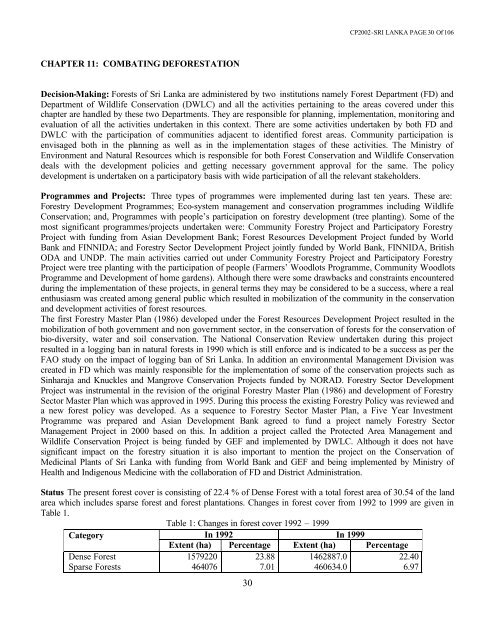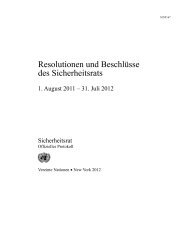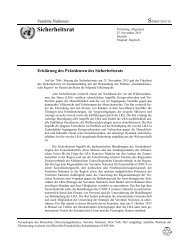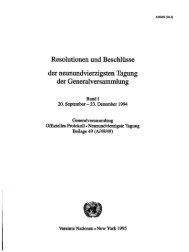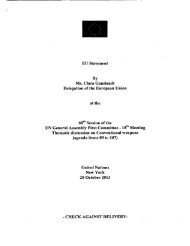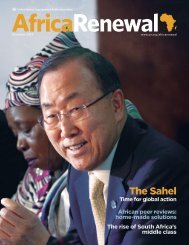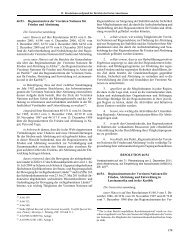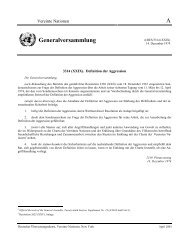SRI LANKA COUNTRY PROFILE
SRI LANKA COUNTRY PROFILE
SRI LANKA COUNTRY PROFILE
You also want an ePaper? Increase the reach of your titles
YUMPU automatically turns print PDFs into web optimized ePapers that Google loves.
CHAPTER 11: COMBATING DEFORESTATION<br />
30<br />
CP2002-<strong>SRI</strong> <strong>LANKA</strong> PAGE 30 Of 106<br />
Decision-Making: Forests of Sri Lanka are administered by two institutions namely Forest Department (FD) and<br />
Department of Wildlife Conservation (DWLC) and all the activities pertaining to the areas covered under this<br />
chapter are handled by these two Departments. They are responsible for planning, implementation, monitoring and<br />
evaluation of all the activities undertaken in this context. There are some activities undertaken by both FD and<br />
DWLC with the participation of communities adjacent to identified forest areas. Community participation is<br />
envisaged both in the planning as well as in the implementation stages of these activities. The Ministry of<br />
Environment and Natural Resources which is responsible for both Forest Conservation and Wildlife Conservation<br />
deals with the development policies and getting necessary government approval for the same. The policy<br />
development is undertaken on a participatory basis with wide participation of all the relevant stakeholders.<br />
Programmes and Projects: Three types of programmes were implemented during last ten years. These are:<br />
Forestry Development Programmes; Eco-system management and conservation programmes including Wildlife<br />
Conservation; and, Programmes with people’s participation on forestry development (tree planting). Some of the<br />
most significant programmes/projects undertaken were: Community Forestry Project and Participatory Forestry<br />
Project with funding from Asian Development Bank; Forest Resources Development Project funded by World<br />
Bank and FINNIDA; and Forestry Sector Development Project jointly funded by World Bank, FINNIDA, British<br />
ODA and UNDP. The main activities carried out under Community Forestry Project and Participatory Forestry<br />
Project were tree planting with the participation of people (Farmers’ Woodlots Programme, Community Woodlots<br />
Programme and Development of home gardens). Although there were some drawbacks and constraints encountered<br />
during the implementation of these projects, in general terms they may be considered to be a success, where a real<br />
enthusiasm was created among general public which resulted in mobilization of the community in the conservation<br />
and development activities of forest resources.<br />
The first Forestry Master Plan (1986) developed under the Forest Resources Development Project resulted in the<br />
mobilization of both government and non government sector, in the conservation of forests for the conservation of<br />
bio-diversity, water and soil conservation. The National Conservation Review undertaken during this project<br />
resulted in a logging ban in natural forests in 1990 which is still enforce and is indicated to be a success as per the<br />
FAO study on the impact of logging ban of Sri Lanka. In addition an environmental Management Division was<br />
created in FD which was mainly responsible for the implementation of some of the conservation projects such as<br />
Sinharaja and Knuckles and Mangrove Conservation Projects funded by NORAD. Forestry Sector Development<br />
Project was instrumental in the revision of the original Forestry Master Plan (1986) and development of Forestry<br />
Sector Master Plan which was approved in 1995. During this process the existing Forestry Policy was reviewed and<br />
a new forest policy was developed. As a sequence to Forestry Sector Master Plan, a Five Year Investment<br />
Programme was prepared and Asian Development Bank agreed to fund a project namely Forestry Sector<br />
Management Project in 2000 based on this. In addition a project called the Protected Area Management and<br />
Wildlife Conservation Project is being funded by GEF and implemented by DWLC. Although it does not have<br />
significant impact on the forestry situation it is also important to mention the project on the Conservation of<br />
Medicinal Plants of Sri Lanka with funding from World Bank and GEF and being implemented by Ministry of<br />
Health and Indigenous Medicine with the collaboration of FD and District Administration.<br />
Status The present forest cover is consisting of 22.4 % of Dense Forest with a total forest area of 30.54 of the land<br />
area which includes sparse forest and forest plantations. Changes in forest cover from 1992 to 1999 are given in<br />
Table 1.<br />
Table 1: Changes in forest cover 1992 – 1999<br />
Category<br />
In 1992 In 1999<br />
Dense Forest<br />
Sparse Forests<br />
Extent (ha) Percentage Extent (ha) Percentage<br />
1579220<br />
464076<br />
23.88<br />
7.01<br />
1462887.0<br />
460634.0<br />
22.40<br />
6.97


